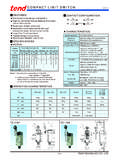Transcription of Malaria Surveillance — United States, 2008
1 Department Of Health And Human ServicesCenters for disease control and PreventionSurveillance Summaries June 25, 2010 / Vol. 59 / No. SS-7 Morbidity and Mortality Weekly Surveillance United States, 2008 MMWR The MMWR series of publications is published by the Office of Surveillance , Epidemiology, and Laboratory Services, centers for disease control and prevention (CDC), Department of Health and Human Services, Atlanta, GA Citation: centers for disease control and prevention . [Title]. Surveillance Summaries, [Date]. MMWR 2010;59(No. SS-#).Centers for disease control and PreventionThomas R. Frieden, MD, MPHD irectorHarold W. Jaffe, MD, MAAssociate Director for ScienceJames W. Stephens, PhDOffice of the Associate Director for ScienceStephen B. Thacker, MD, MScDeputy Director for Surveillance , Epidemiology, and Laboratory ServicesEditorial and Production StaffFrederic E.
2 Shaw, MD, JDEditor, MMWR SeriesChristine G. Casey, MDDeputy Editor, MMWR SeriesTeresa F. RutledgeManaging Editor, MMWR SeriesDavid C. JohnsonLead Technical Writer-EditorCatherine B. Lansdowne, MSProject EditorMartha F. BoydLead Visual Information SpecialistMalbea A. LaPeteStephen R. SpriggsTerraye M. StarrVisual Information SpecialistsQuang M. Doan, MBAP hyllis H. KingInformation Technology SpecialistsEditorial BoardWilliam L. Roper, MD, MPH, Chapel Hill, NC, ChairmanVirginia A. Caine, MD, Indianapolis, INJonathan E. Fielding, MD, MPH, MBA, Los Angeles, CADavid W. Fleming, MD, Seattle, WAWilliam E. Halperin, MD, DrPH, MPH, Newark, NJKing K. Holmes, MD, PhD, Seattle, WADeborah Holtzman, PhD, Atlanta, GAJohn K. Iglehart, Bethesda, MDDennis G. Maki, MD, Madison, WIPatricia Quinlisk, MD, MPH, Des Moines, IAPatrick L.
3 Remington, MD, MPH, Madison, WIBarbara K. Rimer, DrPH, Chapel Hill, NCJohn V. Rullan, MD, MPH, San Juan, PRWilliam Schaffner, MD, Nashville, TNAnne Schuchat, MD, Atlanta, GADixie E. Snider, MD, MPH, Atlanta, GAJohn W. Ward, MD, Atlanta, GAContEntSIntroduction ..2 Methods ..2 Results ..15 Vol. 59 / SS-7 Surveillance Summaries 1 Malaria Surveillance United States, 2008 Sonja Mali, MPH Stefanie Steele, RN, MPHL aurence Slutsker, MD, MPH Paul M. Arguin, MD Division of Parasitic Diseases and Malaria , center for Global HealthAbstract Problem/Condition: Malaria in humans is caused by intraerythrocytic protozoa of the genus Plasmodium. These para-sites are transmitted by the bite of an infective female Anopheles species mosquito. The majority of Malaria infections in the United States occur among persons who have traveled to areas with ongoing Malaria transmission.
4 In the United States, cases can occur through exposure to infected blood products, congenital transmission, or local mosquitoborne transmission. Malaria Surveillance is conducted to identify episodes of local transmission and to guide prevention rec-ommendations for travelers. Period Covered: This report summarizes cases in patients with onset of illness in 2008 and summarizes trends during previous years. Description of System: Malaria cases diagnosed by blood film, polymerase chain reaction, or rapid diagnostic tests are mandated to be reported to local and state health departments by health-care providers or laboratory staff members. Case investigations are conducted by local and state health departments, and reports are transmitted to CDC through the National Malaria Surveillance System (NMSS), National Notifiable Diseases Surveillance System (NNDSS), and direct CDC consultations.
5 Data from these reporting systems are the basis for this report. Results: CDC received reports of 1,298 cases of Malaria with an onset of symptoms in 2008 among patients in the United States, a decrease of from the 1,505 cases reported for 2007 (p< ). These cases included one transfusion-related case, one congenital case, and two fatal cases. Plasmodium falciparum, P. vivax, P. malariae, and P. ovale were identified in , , , and of cases, respectively. The first documented case of simian Malaria , P. knowlesi, was reported in a traveler. Eight ( ) of the 1,298 patients were infected by two or more species. The infecting species was unreported or undetermined in of cases. Based on estimated volume of travel from the World Tourism Organization, the highest estimated relative case rates of Malaria among travelers occurred among those returning from countries in West Africa.
6 A total of 508 civilians acquired Malaria abroad; among the 480 civilians for whom chemoprophylaxis information was known, 344 ( ) reported that they had not followed a chemoprophylactic drug regimen recommended by CDC for the area to which they had traveled. Fourteen cases were reported in pregnant women, among whom none adhered to a complete prevention drug regimen. Interpretation: A significant decrease in the number of Malaria cases occurred from 2007 to 2008. No change occurred in the proportions of cases caused by the various Plasmodium species. civilians traveling to countries in West Africa had the highest estimated relative case rates. In the majority of reported cases, civilians who acquired Malaria abroad had not adhered to a chemoprophylaxis regimen that was appropriate for the country in which they acquired the infection.
7 Public Health Actions: Persons traveling to an area in which Malaria is endemic should take steps to prevent Malaria , which might include taking one of the recommended chemoprophylaxis regimens appropriate for the region of travel and using personal protection measures to prevent mosquito bites. Any person who has been to a malarious area and who subsequently develops a fever or influenza-like symptoms should seek medical care immediately and report their travel history to the clinician; investigation should always include blood-film tests for Malaria with results available immediately. Malaria infections can be fatal if not diagnosed and treated promptly. Malaria prevention recommendations are available from CDC online ( # Malaria ) or by calling the Malaria Hotline (telephone 770-488-7788). Malaria treatment recommendations can be obtained from CDC online ( ) or by calling the Malaria Hotline.
8 Corresponding author: Sonja Mali, MPH, Division of Parasitic Diseases and Malaria , center for Global Health, 4770 Buford Hwy., , MS F-22, Atlanta, GA 30341. Telephone: 770-488-7757; Fax: 770-488-4465; E-mail: 2 MMWR June 25, 2010 Introduction Malaria in humans is caused by infection with one or more species of Plasmodium parasite ( , P. falciparum, P. vivax, P. ovale, P. malariae, and occasionally other Plasmodium species). The infection is transmitted by the bite of an infective female Anopheles species mosquito. P. falciparum and P. vivax species cause the most infections worldwide. P. falciparum is the spe-cies that most commonly causes severe and potentially fatal Malaria . Worldwide, an estimated 243 million clinical cases and 863,000 deaths occurred in 2008, primarily among children aged <5 years living in sub-Saharan Africa (1).
9 P. vivax and P. ovale have dormant liver-stage parasites, which can reactivate and cause Malaria several months or years after the infecting mosquito bite. P. malariae can result in long-lasting infections and if untreated can persist asymptomatically in the human host for years, even a lifetime (1). P. knowlesi, a parasite of Asian macaques, has been documented as a cause of human infec-tions, including some deaths, in Southeast Asia. Investigations are ongoing to determine the extent of P. knowlesi transmission to humans (2). Forty-nine percent of the world s population lives in areas where Malaria is transmitted ( , 109 countries in parts of Africa, Asia, the Middle East, Eastern Europe, Central America and South America, the Caribbean, and Oceania). Before the 1950s, Malaria was endemic throughout the south-eastern United States; an estimated 600,000 cases occurred in 1914 (3).
10 During the late 1940s, a combination of improved housing and socioeconomic conditions, environmental man-agement, vector- control efforts, and case management inter-rupted Malaria transmission in the United States. Since then, Malaria case Surveillance has been maintained to detect locally acquired cases that could indicate the reintroduction of trans-mission and to monitor patterns of resistance to antimalarial drugs. Anopheles mosquitoes remain seasonally present in all states and territories except Hawaii. The majority of reported Malaria cases diagnosed each year in the United States are imported from regions where Malaria transmission is known to occur, although congenital infections and infections resulting from exposure to blood or blood prod-ucts also are reported in the United States. In addition, a limited number of cases are occasionally reported that might have been acquired through local mosquitoborne transmission (4).













